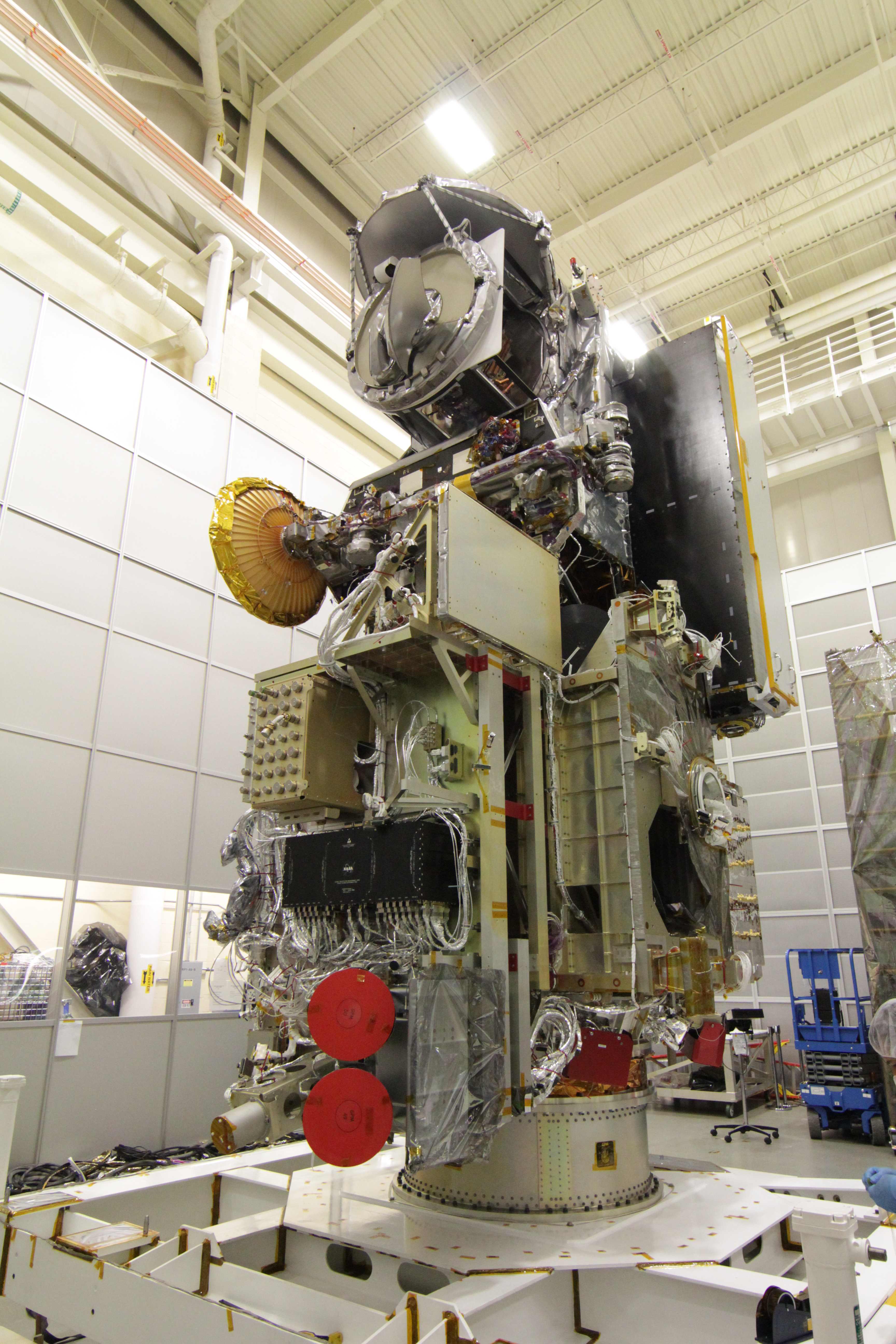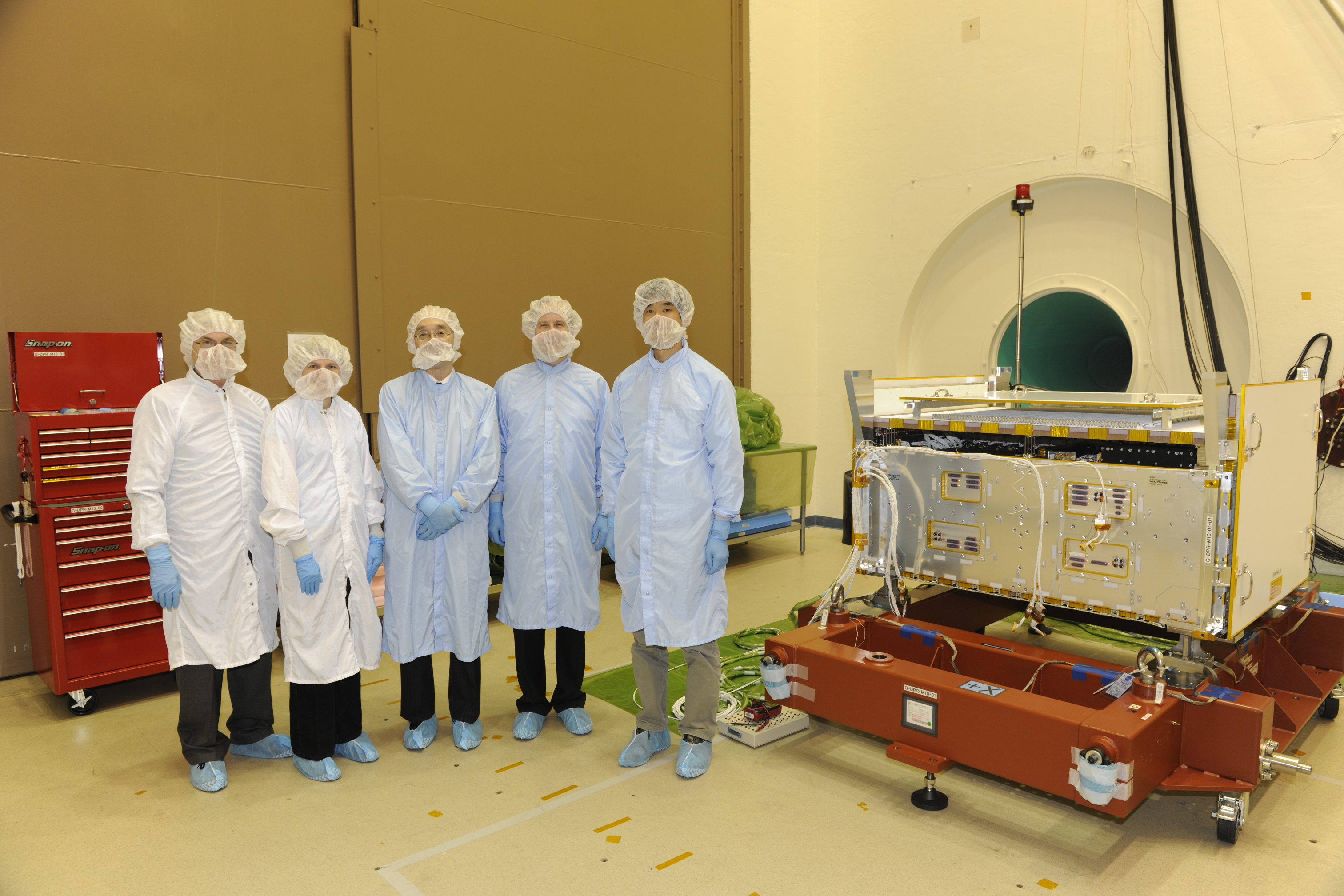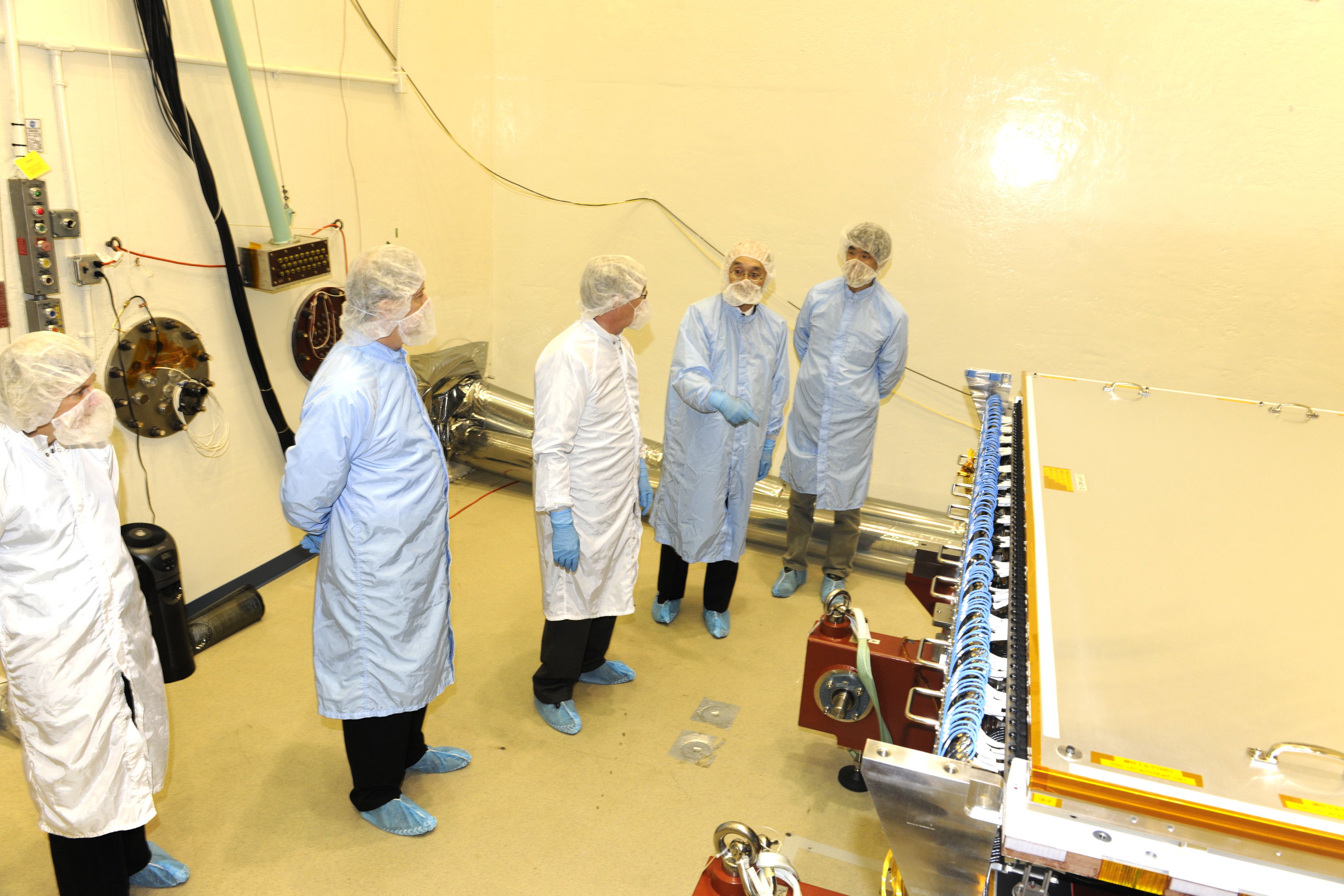Successful Electrical Integration of GPM’s Two Instruments
The electrical integration of the Global Precipitation Measurement Microwave Imager (GMI) instrument onto the GPM Core Observatory was successfully completed in April 2012. Ball Aerospace and Technologies Corp. Boulder, Colo. built the GMI, which arrived at NASA's Goddard Space Flight Center in Greenbelt, Md. in early March and after post shipment processing it was handed over to NASA. The GMI is one of the key instruments for the GPM Core Observatory. This instrument is a passive radiometer with 13 channels covering frequencies from 10 to 183 GHz. In May, 2012, the Dual-frequency








